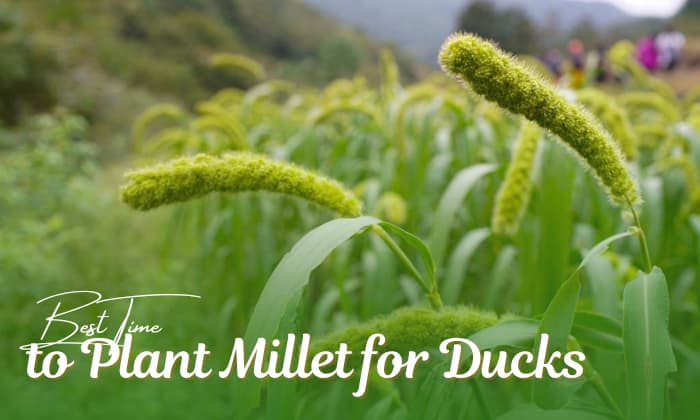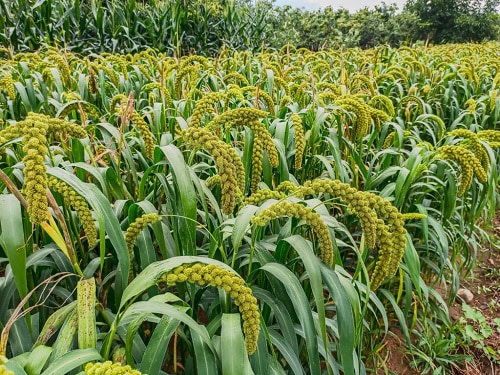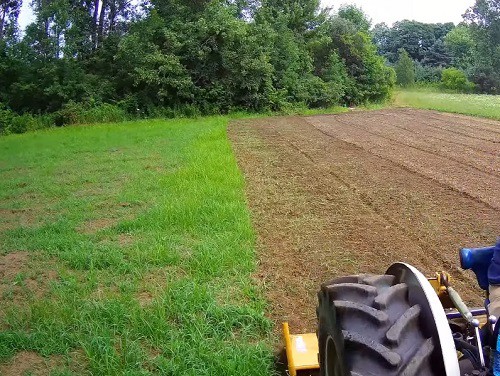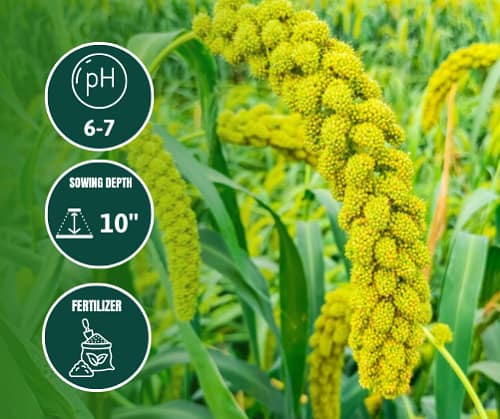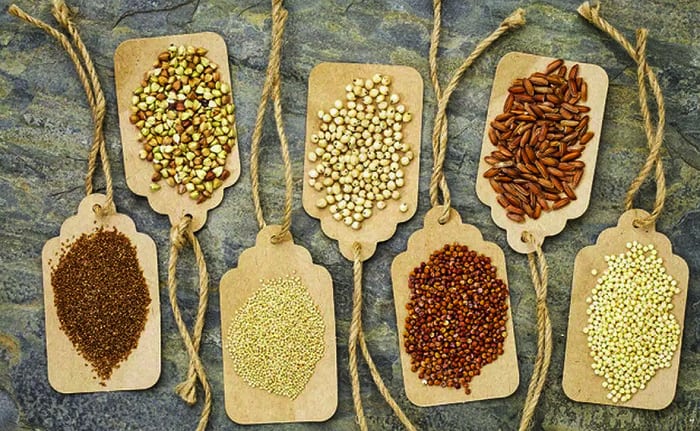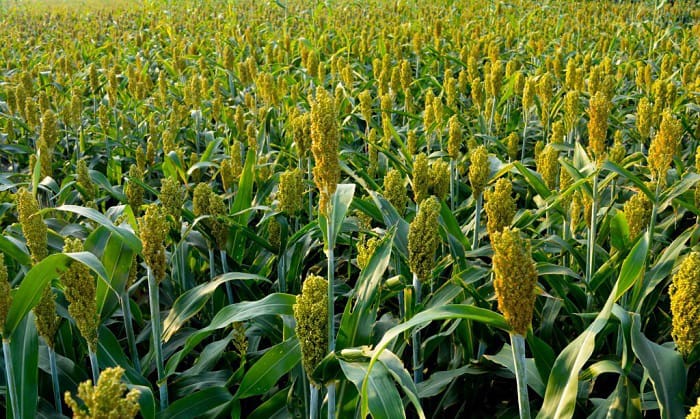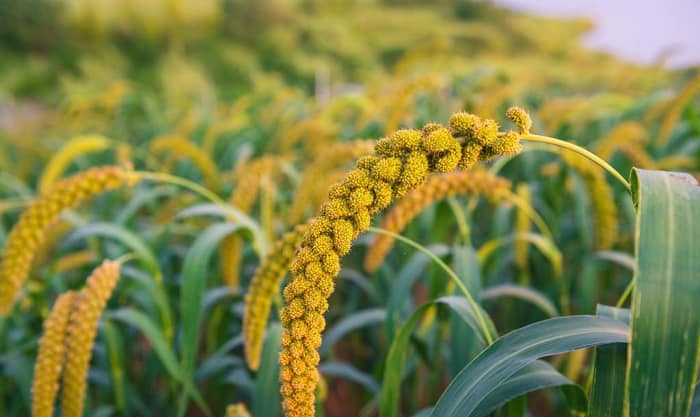Millets are inexpensive grains that are high in protein, fiber, and carbohydrates. They make excellent feeds for ducks with their simple growth requirements and quick maturity rates.
For farmers who are unsure when to plant millet for ducks, June to August tends to be the best months, though earlier seeding in April and May is also possible. Read below for more tips on growing millet.
Table of Contents
Best Time to Plant Millet for Ducks
1. Plant in summer and fall from June to September
As warm-season crops, millets suit summer planting very well. You only need to sow them when temperatures reach 65℉ and let them mature before frosty weather arrives.
Below is the planting time for different types of millet people grow for ducks. You can stick to them for a fall or winter food plot.
- Japanese millet – June 1 to July 15 (or mid-June in the south and early July in the north)
- Golden millet – July 15 to August 15 for north central US and up to September in warmer southern states
- Browntop millet – Early June to August
- Proso millet – June to August
In practice, these recommendations have an advantage over earlier seeding in that your crops will mature closer to the hunting season instead of being ready weeks in advance and just lying in the field, taking up space.
2. Plant in spring in April and May
If you want early summer feed for your waterfowls, it’s possible to plant millet in the spring as well. Wait until the last frost is over to start seeding, and remember that millet growing often begins in April and May for all millet types mentioned above.
May is a better month for planting than April, though, since growth disruptions are less likely to happen within this period.
If you want to garden indoors, sow the seeds in a container 6 weeks before the last frost and place it by the window for sunlight exposure. Once the last frost has passed and the soil temperatures are consistently above 50℉, you can transplant the seedling outside.
3. Planting time in different areas
| Location | When to plant millet |
| In Arkansas | Mid to late August for Japanese and golden millet |
| In Texas | July or August for Japanese and browntop millet |
| In Alabama | April 1 – August 15 for browntop millet, May 1 – August for Japanese millet, and May 1 – June 30 for proso millet |
| In Mississippi | June to early August for Japanese and browntop millet |
4. How late can millet be planted?
The latest time for planting millet for ducks is as follows:
- 50 to 60 days before the first frost for browntop millet
- 75 to 100 days before the first frost for proso millet
- 60 to 75 days before the first frost for golden millet
- And 50 days before the same date for Japanese millet
Note that you can use the start of the hunting season instead of your region’s first frost for planning, since we want our grains’ maturity dates to coincide with when ducks need them.
Planting Guidelines for Millet
Remove all weeds from the soil and loosen it so that plant roots can take hold.
- If using a drill, pour seeds into the seed box. As you drive over the field, the drill will drop seeds into the ground and use its bottom disc to ‘slice’ into the soil and create a trench for planting.
- You might also use a broadcast spreader to spread the seeds as an alternative.
- For moisture-tolerant millet, such as the Japanese variety, you can use the fly-on method.
First, make sure the site is algae-free before flying on the seeds. Flush the planting ground weekly if it gets too dry. As soon as the plants are around 12 inches tall, slightly flood the field and keep it that way until the millets are harvestable.
Just make sure the planting depth is ½ to 1 inch for the first two methods and follow the seeding rate recommendation on the millet package. The general rule is to sow 4 to 30 pounds of seeds per acre with a spacing of two inches between plants.
Other factors to keep in mind when planting millet for duck food plots are:
- The soil should have a pH of 6 to 7 for optimal growth. Loamy or sandy and well-drained soil is preferable, but if you have wet or soggy land, consider planting Japanese millet in standing water instead of other varieties.
In this case, aim for a maximum of ten inches in sowing depth only. Any deeper than that, and the seeds may not germinate.
This also answers the question of “will Japanese millet grow in water or ponds?” for those who live in rainy areas.
- In addition, consider fertilizing the planting medium with 10 pounds of a 10-10-10 formula per 1000 square feet before seeding. Conduct a soil test and adhere to its recommendations if possible.
- The food plot should also receive full sunlight and not have rocky soil or be on a slope.
Choosing the Right Millet Variety
When selecting the best millet for ducks, you’ll need to consider browntop vs proso vs golden millet vs Japanese millet. Here are the characteristics of each type to make choosing one easier.
| Variety | Environmental requirements | Best for | Seeding rate |
| Golden millet | Low water needs, grows well in moderately dry areas | Southern US | 15 to 25 pounds per acre |
| Japanese millet | Suitable for wet soils and locations with shallow floods | Southeast US
Central US |
20 to 25 pounds per acre |
| Browntop millet | Adaptable to wet areas, but slightly inferior to Japanese millet in this aspect | 20 to 30 pounds per acre | |
| Proso millet | Excellent drought tolerance, not for humid regions with high summer temperatures | The High Plains and Western US | 20 to 30 pounds per acre |
Care and Maintenance Requirements
Give millets an inch of water per week and fertilize the soil after planting with 40 to 50 pounds of nitrogen per acre.
Repeat the fertilizing a month afterward with the same application rate.
As the millets grow, watch out for aphids, whiteflies, and grasshoppers. Aphids are removable with an insecticide; whiteflies are controllable with a flour spray or soap and water; and grasshoppers are deterrable with a garlic or vinegar concoction.
Harvesting Millet for Ducks
The idea behind growing a plant to attract ducks is that you want the ducks to find it. So it’s not really necessary to harvest millets, especially if you’re growing them for hunting.
But in case it’s necessary to pick your crops, collect the seeds when millet plants turn golden or the heads are 75% brown. Simply cut the heads off with scissors and dry them away from sunlight. You can then rub the crops to dislodge the seeds and have them ready for use.
Regarding when to harvest millet, the typical month is October in the US, but you can add the plant’s maturation period to your seeding time to determine the exact date.
Frequently Asked Questions
Does millet come back year after year?
No. Millet is an annual, so it needs to be reseeded to return for the second year. Save seeds from your current plant to regrow them as necessary.
How long does it take for millet to mature for duck feeding?
It will take 50 to 100 days, depending on the variety. Generally speaking, most millet types for ducks will mature in 50 to 75 days at most.
Can millet planting attract other waterfowl species besides ducks?
Yes. Millets will also attract waterfowls like geese and swans. Other non-waterfowl species that also enjoy millets are turkeys, quails, pheasants, and doves. You may also see people grow millet food plots for deer.
What food to plant for ducks?
Aside from millet, people will also plant rice for ducks together with corn, wild celery, smartweed, coontail, duckweed, milfoils, and acorn.
Among these, planting wild rice for ducks is probably the best option for grain growers if we leave out millet. This plant can grow underwater and survive winter if seeded in the fall, though people can also sow it in spring.
What are Japanese millet growth stages?
The main growth stages for millet are seedling, vegetative development, flowering, and maturity. All of these can take place in about six weeks.
What is the best time for planting rice for ducks?
Plant in the spring after the ducks have migrated and again in the fall when the weather is cool, before the first frost.
Conclusion
When to plant millet for ducks? The answer is June to September under frost-free weather. Getting your planting dates right will also help boost germination rates and ensure your food plot’s ready in time for the hunting season.
We hope this article showed you how to plant millet for ducks in a straightforward manner. Thank you for reading.
Read more:

Hi, I am William – Floridayards’ digital content creator. My job is to find answers to all your concerns with thorough research and our team’s expert advice. I will also bring you honest reviews on the best products and equipment for raising your beautiful garden. Please look forward to our work!


